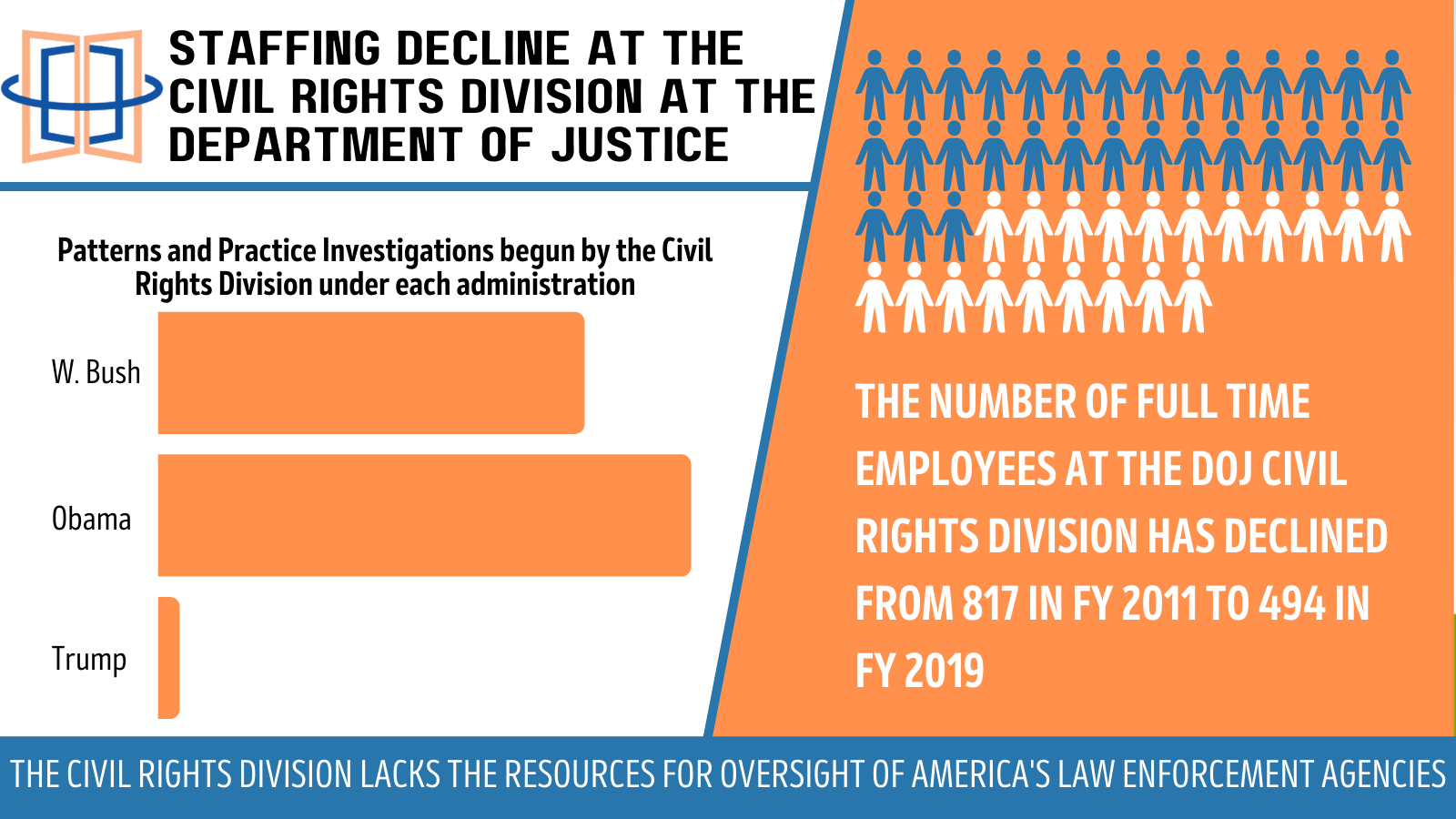Throughout the 2020 campaign, in the wake of nationwide protests over the murder of George Floyd and other unarmed black people by police officers, Joe Biden committed himself to reforming law enforcement and combating police violence. But significant challenges loom in Biden’s quest for police reform. The federal government’s role in state and local law enforcement agencies is limited, and Biden’s ability to shepherd police reform legislation through Congress will be hampered by Republican opposition and disinclined moderate Democrats. Despite these obstacles, however, Biden is not powerless to make strides towards his campaign goals. Through his Department of Justice’s Civil Rights Division, he holds a significant power over local policing.
After the 1992 acquittal of the Los Angeles police officers for their brutal assault on Rodney King, Congress passed the Violent Crime Control and Law Enforcement Act. While the law increased police presence in cities across America and accelerated mass incarceration nationwide, it also provided the federal government with an important tool in the fight against systemic police violence. The law provides the Department of Justice (DOJ) with the authority to investigate and compel policy changes in law enforcement agencies that have a pattern of violating civil rights. These inquiries, known as “pattern and practice investigations,” are conducted by the DOJ’s Civil Rights Division (CRD) and can result in significant changes in departmental policies.
Pattern and practice investigations are effective at reducing police use of force, with offices that adopted DOJ recommendations experiencing a 32 percent reduction in officer shootings the following year. Despite this, DOJ has never sufficiently used this important tool. As of June 2020, the DOJ had launched only 70 investigations of local law enforcement agencies since 1994. This rate is particularly low when compared with the approximately 18,000 law enforcement agencies across the country — an investigation rate of 0.4 percent over 26 years. Though the low rate may be partially explained by cautious leadership, much of it is likely attributable to a lack of funding and staff. Because pattern and practice investigations focus on systemic behavior of an entire department, these investigations can drag on for years. The larger law enforcement departments investigated by the DOJ have sworn officers in the tens of thousands, allowing the investigations to suck up time and resources.
The size of the CRD has fluctuated over the years, reaching new heights under the Obama administration as the DOJ implemented more pattern and practice investigations than ever before. Obama outmatched his predecessor, opening 25 such investigations to Bush’s 20. To keep up with the increasing demands on the agency, the Obama administration increased staffing levels to an all-time high, reaching 817 full-time employees in FY 2011. Forced to contend with the financial impact of a number of continuing resolutions and budget sequestrations, Obama Attorney General Eric Holder implemented a hiring freeze for the Department of Justice part way through FY 2011. The austerity environment that existed under the Obama administration continued the freeze well past its originally intended expiration date at the end of FY 2011 and was only lifted several months into FY 2014. The hiring freeze led to a dramatic decline in staffing numbers at the Civil Rights Division, with headcount falling by almost 30% from FY 2011 to FY 2014. Even after the hiring freeze was lifted, numbers at the Civil Rights Division continued to fall in the following years, albeit more slowly than they had previously, as the 573 employees in FY 2014, declined to 565 in FY 2015 and to 552 in FY 2016.
Despite this already significant decline, the Trump administration further slashed agency staffing, hitting a low of 494 in FY 2019. In addition to staffing levels, the budget of the CRD has declined dramatically since its high in FY 2010, when it received $145,449,000. In FY 2020 the CRD received $148,239,000 which, accounting for inflation over this period, translates to a functional budget cut of almost $25,000,000 or nearly 20 percent. While this decline in staffing and funding was not shocking given the Trump administration’s disinterest in using federal power to curb police misconduct (only initiating a single pattern and practice investigation), the Biden administration has already shown signs that it wants to use this power whenever possible. Attorney General Merrick recently announced that his DOJ would be launching an investigation into the Minneapolis Police Department, and city officials in Columbus have requested the DOJ investigate their police department.
With Democrats once again holding the levers of federal power after four years of a Trump administration intent on avoiding all investigations of law enforcement, Biden must act. If Biden is serious about using his administration to pursue more investigations of America’s 18,000 law enforcement agencies he must properly fund the CRD. The Biden budget request released last month included a $33 million increase in funding for multiple DOJ programs including the Civil Rights Division, but more details have yet to be released. After a year of police departments retaliating violently against protestors (often against court orders) the Biden administration will need a strong and well-staffed CRD capable of investigating more police departments than ever before.
A $33 million dollar budget increase divided amongst multiple crucial programs isn’t sufficient to address the systemic problems with America’s police departments. While Congress debates long overdue investments in a sustainable and just economy that number in the trillions, we should not forget relatively modest sums to the Civil Rights Division could pay off in a drastically less unjust society.

